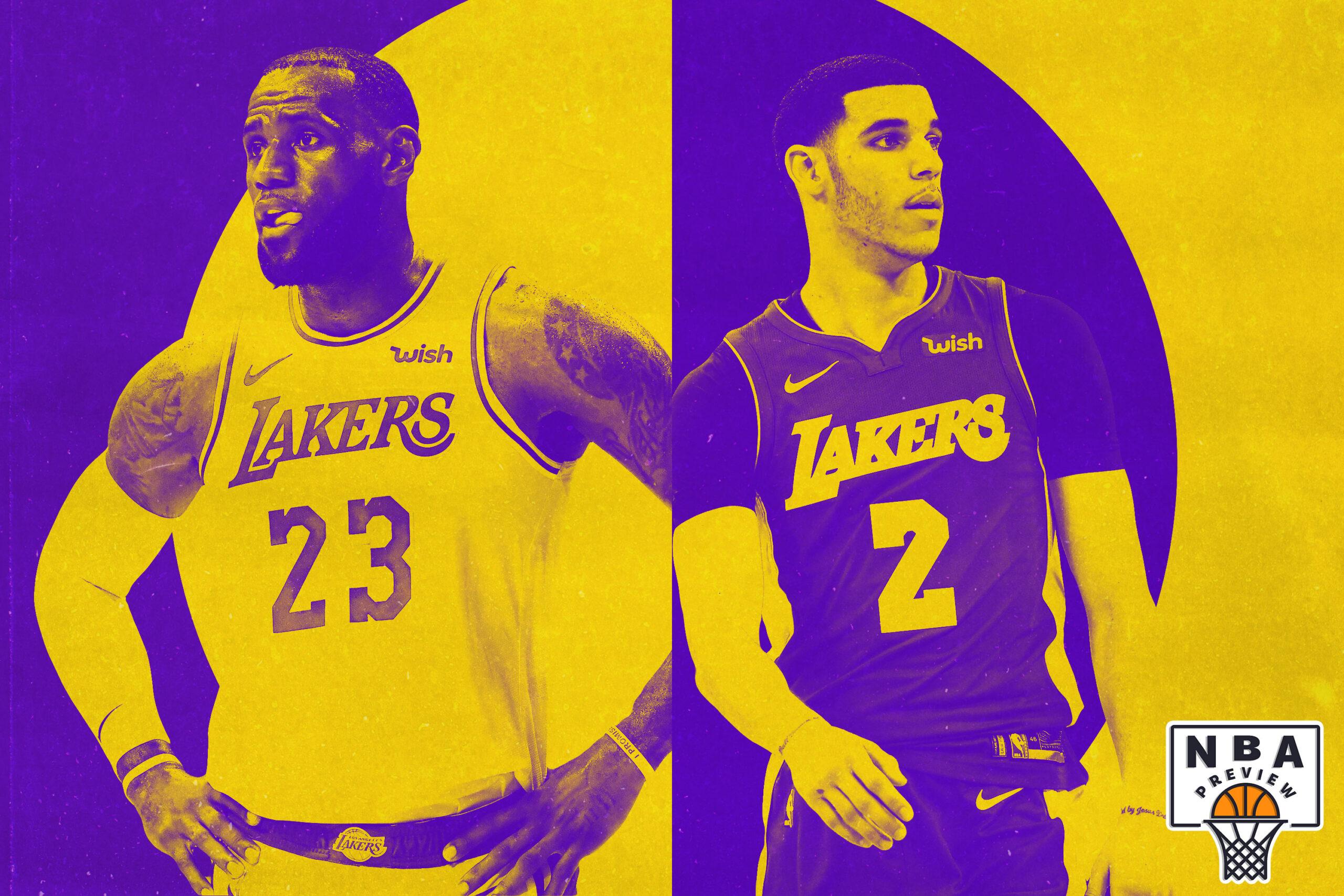
Break out your Ben Simmons hand trackers—the NBA is back. We’re counting down the days until the 2018-19 season tips off on October 16 by taking a hard look at the floor and ceiling of every team in the league. This year, each Best Case, Worst Case capsule is also accompanied by The Ringer’s preseason ranking, our staff’s best guess about where that team will finish this season. We look forward to your emotionless, considered responses.
Ringer Preseason Ranking: 8
Last Season: 35-47
Notable Additions: LeBron James (free agency), Rajon Rondo (free agency), Lance Stephenson (free agency), JaVale McGee (free agency), Michael Beasley (free agency)
Notable Subtractions: Brook Lopez (free agency), Isaiah Thomas (free agency), Julius Randle (free agency)
Vegas Over/Under: 48.5
Team MVP: LeBron James
Best-Case Scenario: The same best-case scenario for every team LeBron has been on in the past decade: a season that results in an NBA championship. Another Larry O’Brien trophy in June would bring the Lakers’ total count to 17, tying the Boston Celtics for most for a single franchise.
From a team-building standpoint, the hardest part may already be over for the Lakers. Building a perfect team around LeBron has befuddled many a front office over the past 15 years, but one can’t build around LeBron without securing him first. Sure, LeBron tipped his hand more than a year prior to his eventual signing, but that doesn’t take away from the shock of the reality before us: The best basketball player on earth plays for the Lakers, and there is no more compelling chemistry experiment on television.
From a certain vantage, the Lakers are built in direct response to the shifting expectations of the league. The median height for the Lakers is 6-foot-8; with the exception of Rondo, who is 6-foot-1 with a 6-foot-9 wingspan, there is no one on the roster shorter than 6-foot-5. Just about every player on the roster aside from its designated centers has the ability to put the ball on the floor and create, whether it’s making a quick read on a closeout drive or initiating the pick-and-roll from the top of the arc. In other words, the Lakers are, fittingly, a bizarro Western iteration of the Celtics, who operate within a fluid, democratic offense that highlights the interchangeability of its parts. Of course, the chain of command will be more clearly delineated on a team led by LeBron, and it remains to be seen how much control LeBron is willing to (or should) cede over the course of a season. But for now, LeBron’s persistent wish for more ball handlers to ease his burden has been answered tenfold by Lakers management.
More important than the veterans who glommed onto LeBron’s comet tail over the summer (Rondo, Stephenson, Beasley, McGee) are the Lakers’ young studs whose ideal roles seem to perfectly align with the sensibilities of a team with LeBron at the center of everything. Brandon Ingram is the star apparent with the ability to score from all levels of the court; Lonzo Ball is the selfless caretaker who can run a team when given the keys; Josh Hart is the no-nonsense 3-and-D stalwart; Kyle Kuzma is the dynamic, athletic big man who takes bits of what Kevin Love, Tristan Thompson, and Channing Frye could do in Cleveland and puts that package into a single frame. Lakers fans skeptical of acquiring LeBron often cited the desire to watch their young core develop organically; in the team’s best-case scenario, their upstarts will actualize much faster than anyone could have expected under LeBron’s guidance. Yes, the Lakers have their King, but much like the stunning success of the Celtics and Sixers last season, the youth movement will be what solidifies the team’s elite status.
If we’re lucky, a familiar chant will rain down early upon the Moda Center on October 18, when the Lakers play their season opener in Portland against the Blazers. Beat L.A. is one of the greatest rallying cries in professional sports, a unifying gesture of begrudging respect (and venomous contempt) toward the Lakers, which have historically been a monolithic symbol of greatness across several eras. The rhythm and cadence of the chant follows the Go, Team, Go! format, which conveys just how thin the line between love and hate really is.
But it’s been more than half a decade since Beat L.A. has held any significant weight. (It’s hard to take a team down a peg or two when they’ve already been reduced to a nub.) That changes next week, whether the Lakers are deserving of the hype or not. Because with LeBron in tow, the chant goes beyond poking at the veneer of Lakers Exceptionalism and incorporates the world’s love-hate relationship with LeBron himself. The desire to beat L.A. hasn’t been this strong in nearly two decades. For Lakers fans, simply commanding that level of respect on a nightly basis ought to be a welcomed return to form.
Worst-Case Scenario: Now This Is Going to Be FUN, Pt. 2
The Lakers were burned by a mega-offseason before, and it’s within the realm of possibility for that 2012-13 from hell to reincarnate in 2018-19. We rarely know where the time goes. We spent a decade wondering when the Spurs would finally give up the ghost, and in a summer’s instant, they’ve practically disintegrated before our eyes. LeBron has put an unconscionable toll on his body over the past 15 years, and has played in 94 percent of possible regular-season games in that span. He is right around the point in which many of the greats throughout basketball history faced a sharp decline in ability. What if this season is the start of that drop? LeBron may spend millions on his biomechanics, but money can’t buy back his youth.
More likely culprits in a potential Lakers collapse abound. The same fans who bemoaned the arrival of LeBron could very well turn on the team’s young players if they can’t develop at a fast enough pace. What if Ingram doesn’t quite resemble a player worthy of marking as a second option? Would that ruin his trade value or make him more likely to hit the trading block? What if Lonzo’s revamped jumper is all smoke and mirrors? What if Kuzma is nothing more than Frye? Despite all the veterans it’s added to the team, the franchise is still heavily reliant on getting its young core to coalesce quickly. It’s asking the world of them, especially under the crucible that LeBron creates.
Then there are the vets on the other side of the divide. The team has become a fount of irrational confidence, and the so-called MUD collective will offer plenty of scapegoats should things go south in a hurry. LeBron’s teams often exist in a constant state of crisis until the postseason, and few have had as steep a learning curve as this Lakers team. It’s only a matter of time before fingers are pointed and a players-only meeting attempts to bridge the insurgent factions cropping up in the locker room.
(By the way, here’s an early prediction: The lamentable “MUD” nickname will stick. It’s inarguably bad, but LeBron is no fool. It’s a nickname whose advent coincides with the release of Mudboy, the debut album of Sheck Wes, the artist behind the biggest rap track of the year. We’ll all be mewling “Mudboys!” on Twitter after a Rondo-to-McGee alley-oop soon enough.)
But really, the worst-case scenario for the Lakers in Year 1 of LeBron is any scenario in which the team can’t stay healthy. Whether they live up to the impossible standards that LeBron sets for every team he’s on, or they’re just exceedingly underwhelming given the collection of individual talent on their roster, these Lakers are as fascinating as any team in the post-Heatles era. For the first time in what feels like forever, LeBron has broken free from the endless loop of Warriors-Cavs and given us something new. We’ve spent all summer wondering. We don’t need any excuses. We just need the show to get going.
TL;DR: Hey, have you heard? LeBron James is a Laker!


